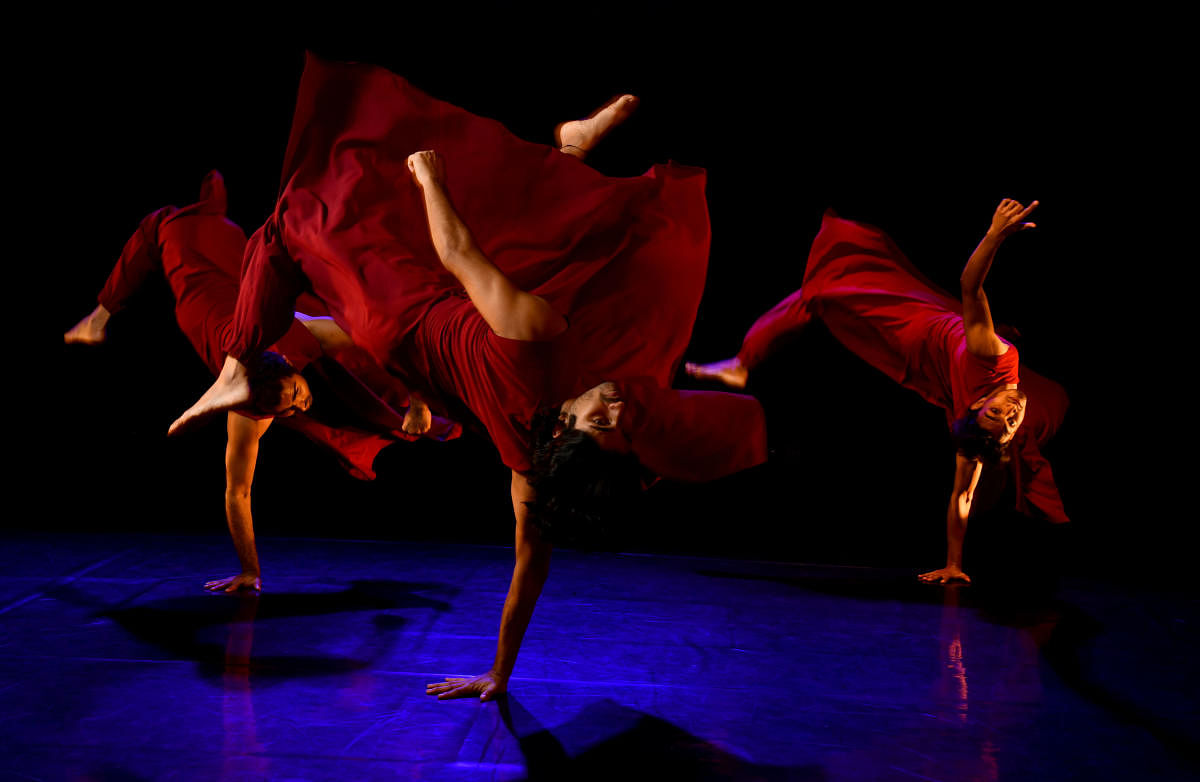
The high-tech revolution that has swamped the world over the decades has cast a new light on the ecosphere of performing arts. Artistes all over the globe are using the most advanced digital channels to express their love for the arts and Jayachandran Palazhy too is no different. In fact, the artistic director of Attakkalari Centre for Movement Arts has always been a pioneer when it comes to digital arts and with his latest production ‘Sthavara-Jangama’, which was staged in the city recently as the opening act of the ongoing 10th Attakkalari India Biennial, he proved his mettle once again.
‘Sthavara-Jangama’, which means moveable and immoveable objects in Sanskrit, explored the intangible relationship between human beings and the physical spaces and structures around us. “The Vachana poets like Allama Prabhu spoke particularly about how to value our experiences more than materialistic possessions. This is particularly relevant in these times of Covid when a lot of people have lost their loved ones and many, like migrant labourers, even became dispossessed,” explains Jayachandran. “For many, the home became a place of refuge while for some, it was also a prison — a place of work, tension and trauma.”
All these facts plus the challenges that humanity is coping up with thanks to the pandemic were amalgamated into the dazzling dance production that was resplendent with live music, dance and digital imagery. “I wanted to connect the dots between the past and future, literature and performing arts, history and contemporary times,” he reveals. While the production showed the trials and tribulations of people, it was not all about “gloom and doom” as Jayachandran says, “Landscapes and images are repositories of memories and humans are the carriers of these memories. The production was also about this relationship that we share with spaces and landscapes.”
The collaborative effort featured the likes of renowned Kannada poet, playwright and scholar H S Shivaprakash, who was the consultant and advisor. Award-winning musicians M D Pallavi and Bindhumalini composed the music while Germany-based award-winning theatre director and digital artist Christian Zieglar created the digital imagery, which depicted ancient architectural marvels from South India, particularly the Vijayanagara Empire morphing into restless imagery from current urbanscapes. “It was a promenade performance that started on the rooftop of the Bangalore International Centre and culminated in the theatre giving the spectators a little journey into time and space,” informs Jayachandran.
A bouquet of acts
The tenth Attakkalari India Biennial (Dec 2021-Feb 2022) features dance companies from over a dozen countries including Switzerland, Korea, Norway, the United Kingdom, Australia, Sweden, Spain, Germany, Japan and the Netherlands collaborating with their Indian counterparts for cutting-edge performances and masterclasses. The hybrid programme also has a concoction of live stage performances, in-studio and online workshops, film screenings and talks.
Speaking of technology playing an imperative role in the world of arts, Jayachandran says, “Our thinking pattern has changed with the internet. AI and biotechnology are also changing the way we perceive art. Performances are a world of make-belief and with wood, metal or plaster of Paris, you can only work in a chronological way. Digital art, on the other hand, allows one to conduct everything in a non-linear fashion. It helps us create metaphors, images and motifs that can transform the venue into a different place altogether.”
The Attakkalari Centre in Bengaluru has always been a digital arthouse that has been synonymous with the best. Expressing his dreams for the future, he says, “We are trying to set up another centre for innovation in performing arts. With more and more people showing an interest in the connection between traditional wisdom and performing arts, we aim to teach art forms in an accessible format as all of us may not have 20 years to learn them thoroughly.”